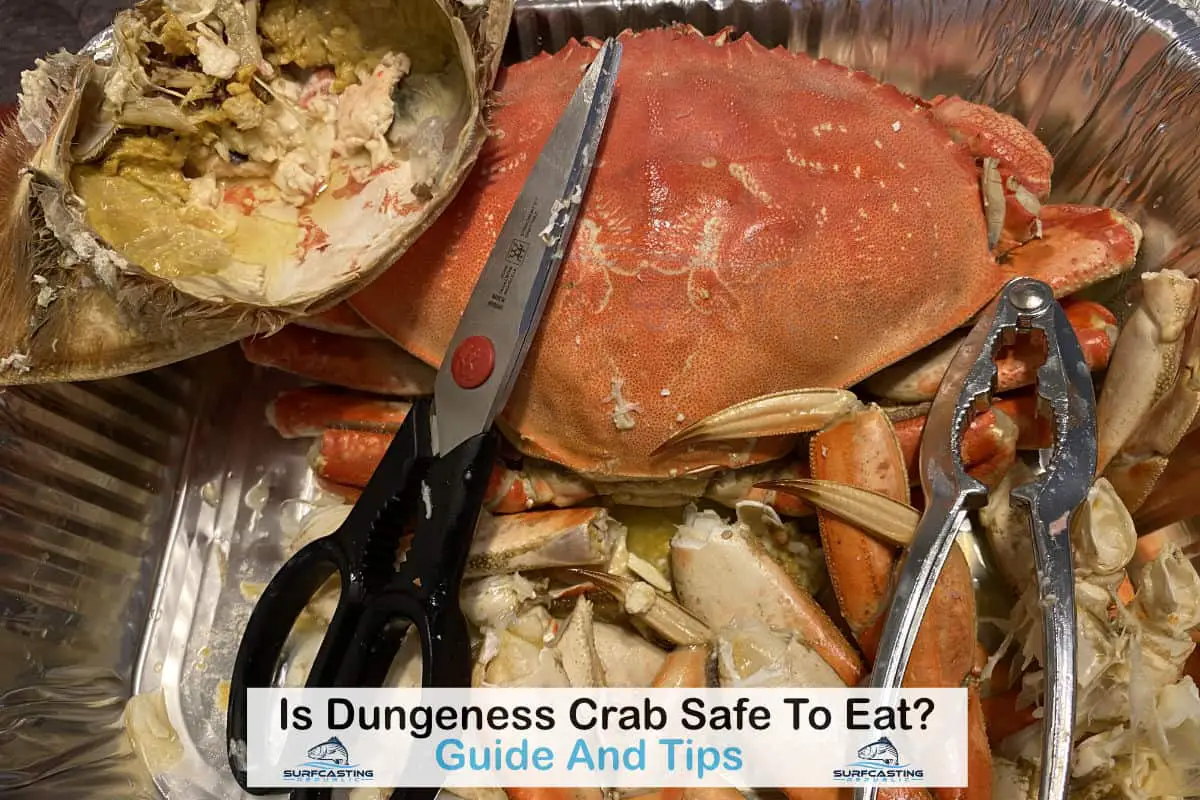Dungeness crab is a delicacy around the world, with an expensive price tag. Although it can be hard work to get to the crab meat, it’s a well-earned victory once you taste the delicious, sweet flavor. Many people wonder, is Dungeness crab safe to eat?
Like many crustaceans, Dungeness crab can be safe to eat most of the time, as long as it has come from water not flagged for harmful toxins. There are also parts of the Dungeness crab that you cannot eat, such as the guts, which many people call crab butter.
We’re going to tell you everything you need to know about how to enjoy Dungeness crab safely. No one should miss out on this delicious seafood out of fear or misinformation.
What Is Dungeness Crab?
Dungeness crab is a valuable crustacean that gets its name from the port in Dungeness, Washington, the most profitable West Coast fishery.
This breed of crab can grow to widths between 20 to 25 centimeters (9.8” to 7.9”) at the shell. They have ten legs, with claws on the two front legs and a wide hard shell.
The most valuable part of the crab is the claws, which contain the most meat and the best flavor. The legs are the second-best source of meat, with a sweet, subtle taste and a slight saltiness. The body does have some edible meat, but it takes more work to get out.
Dungeness Crabs Have Toxins, but You Can Still Use Them
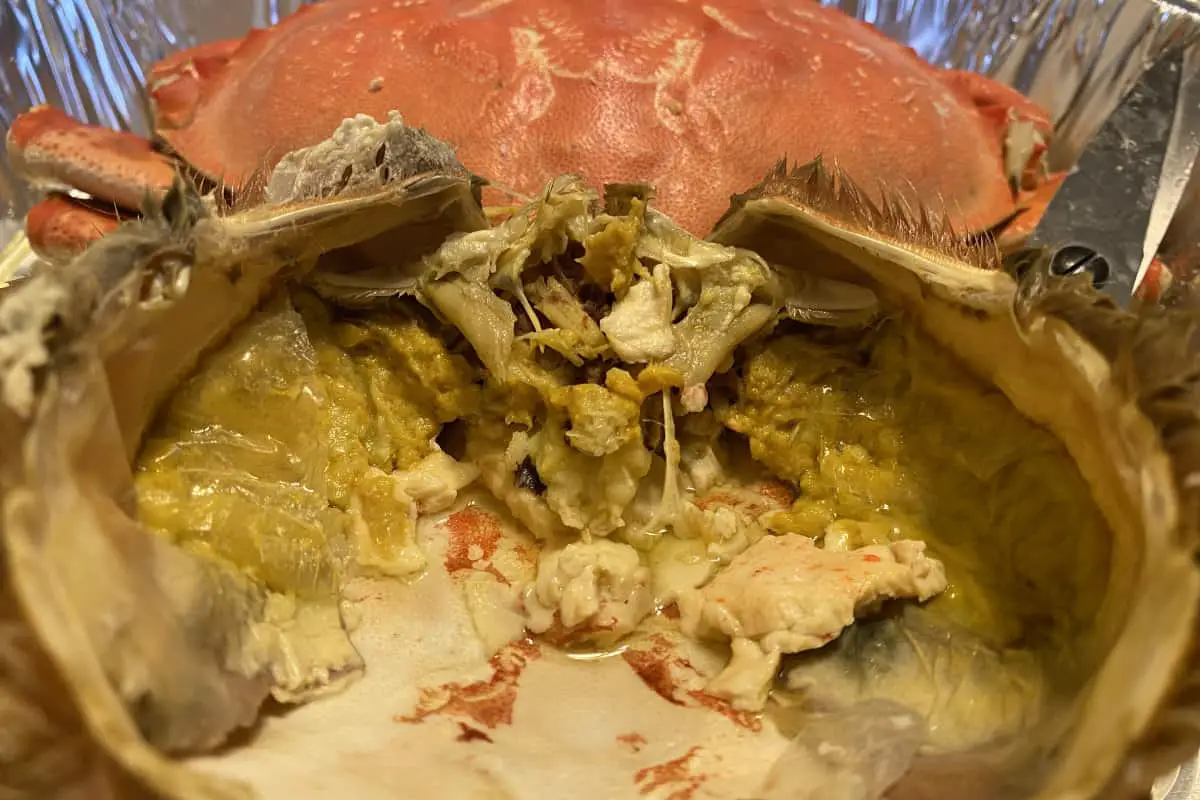
Many people worry about eating Dungeness crab, given all the warnings by health departments about crabs having high levels of dangerous toxins like domoic acid.
While there are traces of domoic acid in the crab meat, the most concentrated amounts are in the viscera, which are the crab guts, and commonly referred to as “crab butter (California Department of Fish and Wildlife).”
Related Article: Learn How To Catch Dungeness Crab From the Surf![]() . Check out my beginners to catch your Dungeness crab.
. Check out my beginners to catch your Dungeness crab.
You should never eat the viscera, as it can cause you to experience domoic acid poisoning. And to avoid getting poisoning from contaminated crab meat, check the state health advisories site to learn about warnings of areas to avoid.
States now have to test the fishing waters to check for high levels of biotoxins, such as domoic acid. When the levels are higher than regulated by the USFDA, an advisory is issued, and the area is closed until it is safe again (California Office of Environmental Health Hazard Assessment).
What Is Domoic Acid?
Domoic acid occurs naturally due to Pseudo-nitzschia – a single-celled diatom bloom (. There is no answer to what causes the growth of Pseudo-nitzschia, so it’s difficult to predict what areas will be affected.
Species like crustaceans, shellfish, and fish absorb domoic acid from the water. But it does not cause any outward reactions, so it’s not apparent by visual inspection that an animal has high domoic acid levels.
Dungeness crab is considered a crustacean, so they often have Domoic acid present in their bodies. Ensuring that you prepare your crab correctly and avoiding eating the viscera are two ways to reduce the amount of domoic acid you consume.
How to Reduce Domoic Acid Poisoning
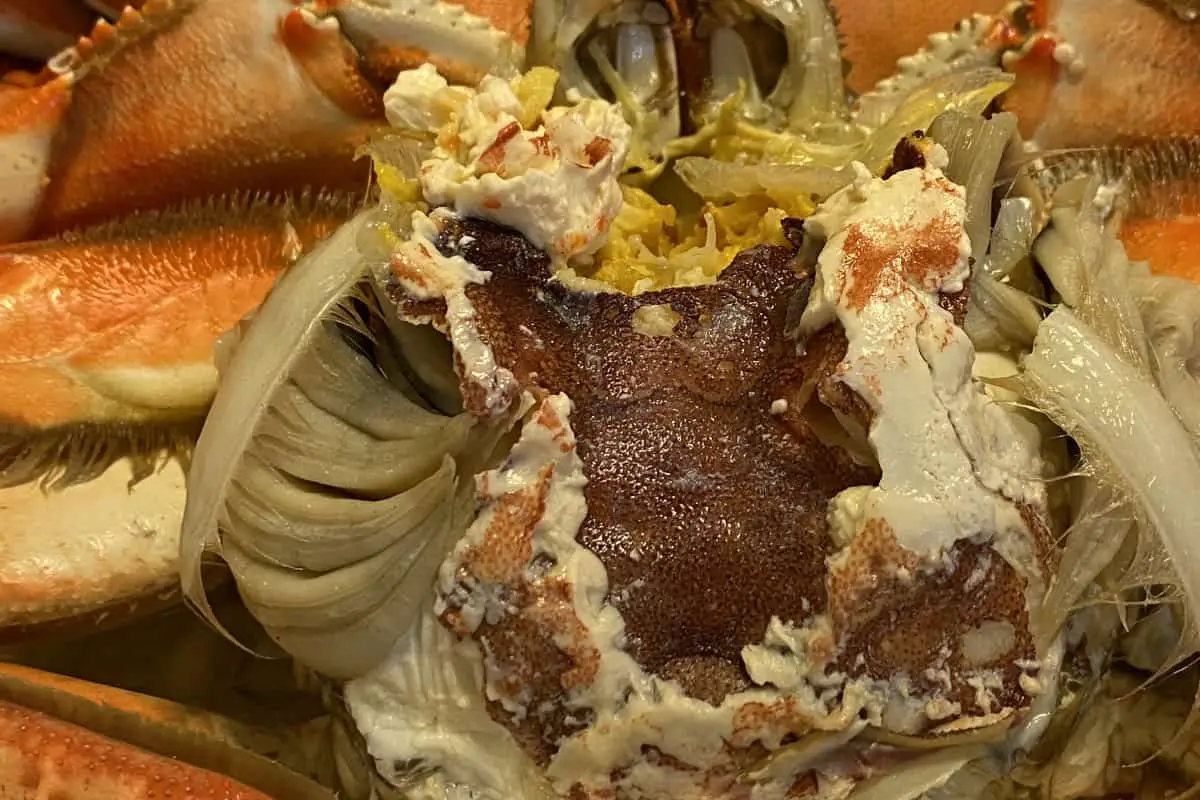
Your crabs might have levels of Domoic acid in their system without you even knowing it. Preparing the crabs the right way will protect you from most of the toxicity. But preparing them the wrong way could make you sick.
Boiling whole, uncleaned crabs in water will reduce the amount of domoic acid because it seeps out of the crab and into the water. Because the liquid becomes contaminated, always throw it away. You cannot use it to make broth, stews, roux, or any other type of food.
Using other cooking methods like grilling, steaming, baking, and stir-frying will not do as well for removing high levels of domoic acid, so you could still end up with poisoning.
Most experts recommend doing a slight boil before using one of these cooking methods, so all the domoic acid is removed.
Half-backing can also help remove domoic acid from uncooked crabs by removing the innards before cooking. Since the guts hold the most toxins, removing it before cooking means, there’s less to leak into the body.
Symptoms of Domoic Acid Poisoning
In high doses, domoic acid can be fatal. But most cases tend to be mild to moderate cases.
Domoic acid poisoning can present anytime between thirty minutes to twenty-four hours after ingesting contaminated meat.
For mild cases, symptoms include vomiting, diarrhea, dizziness, headaches, and abdominal cramps and take a few days to go away.
With severe cases, the symptoms get worse. They can include cardiovascular instability, seizures, confusion, disorientation, breathing complications, excessive bronchial secretions, permanent short-term memory loss – Amnesic Shellfish Poisoning – coma, or even death (Scientific American).
Can Pregnant Women Eat Dungeness Crab?
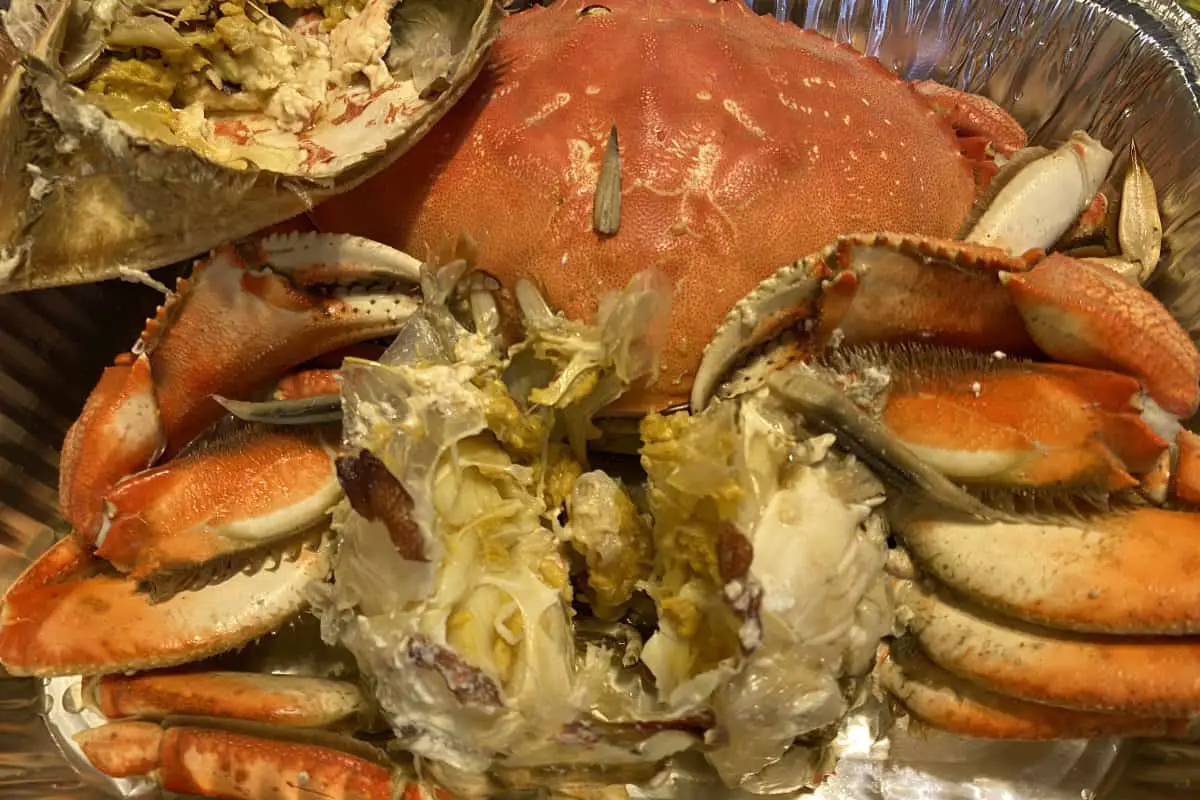
Many pregnant women worry about eating Dungeness crab. There have been many myths claiming that this type of crustacean is dangerous during pregnancy.
The truth is Dungeness crabs are one of the best kinds of seafood to eat while pregnant, according to both the USFDA (United States Food and Drug Administration) and the EPA (Environmental Protection Agency).
Dungeness crabs have lower lead levels than other types of fish and lower mercury levels (Oceana). Both of these elements are dangerous for pregnant mothers and the unborn fetus.
Seafood like Dungeness crab provides lean protein, essential Omega-3 fatty acids, and vitamins A and D (Healthline).
Proper Way to Prepare and Cook Dungeness Crab
How you prepare Dungeness crab will depend on if it’s live, fresh, or frozen. We’ll discuss all of these methods, so you’re prepared in any scenario.
Preparing crab the wrong way can be dangerous and cause food poisoning, or worse, domoic acid poisoning.
More on: Dungeness Crab Snaring![]()
How to Prepare Live Crab
When working with live Dungeness crab, they need to be refrigerated loosely covered until you’re ready to cook them. Live crabs need to be cooked within 12 hours (Sunset).
Use tongs or your upper fingers to grab the crab from the back of its shell. This position will keep the crab’s claws from reaching you.
Fill a large pot with water about ¾ way to the top. Next, add ½ cup of salt for each gallon of water in your pan. Taste the water to determine if you need to add more salt.
Your pot should taste similar to seawater to bring out the crab’s natural flavors.
Cooking Your Live Crabs
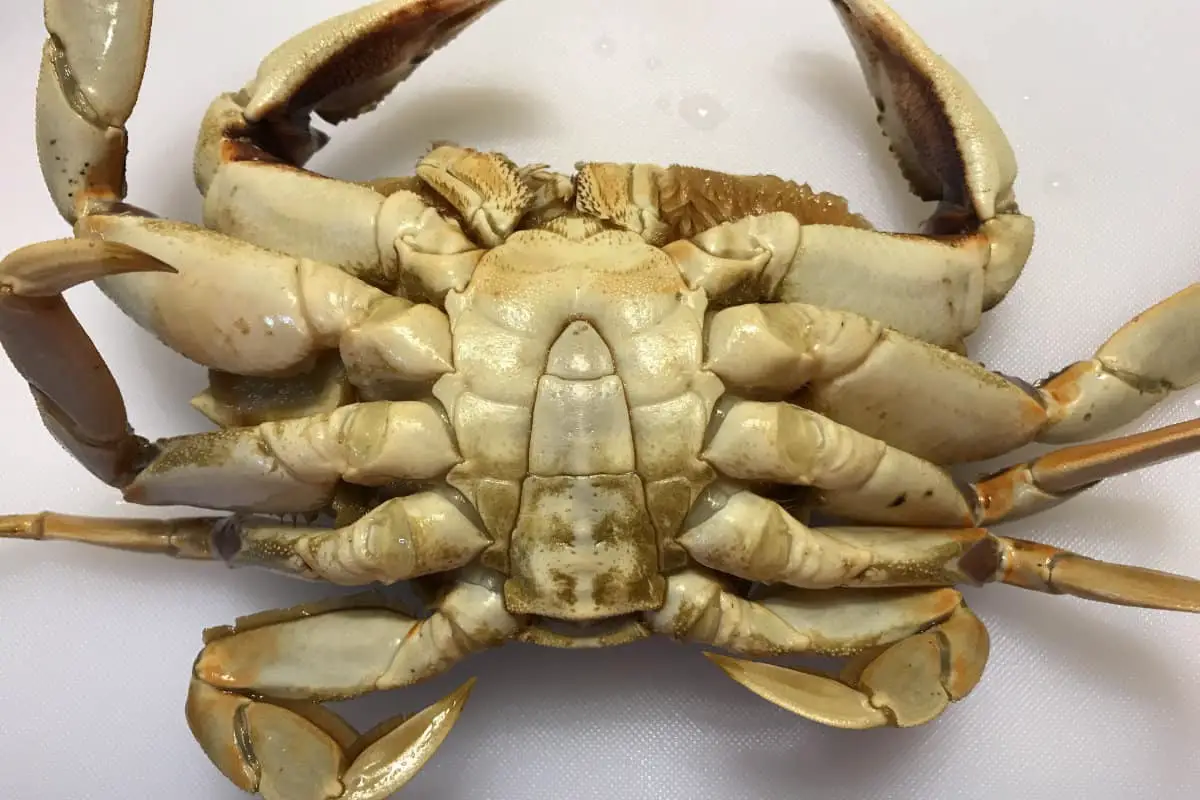
Once the water has reached a rapid boil, pick your crab up and put it into the pot. Tongs allow you to avoid getting burned by splashing water.
Ladle out any extra water until the amount is at least three inches below the rim. This precaution keeps water from boiling out of the pot.
Once you’ve added the crabs to your pot, the water will stop boiling. Keep the temperature on high until the water resumes a hard boil. From this point, start a timer. Dungeness crabs take 12 to 15 minutes to cook thoroughly.
After thoroughly cooked, remove the crab from the boiling water and put it into a cold water bath to cool down and stop the cooking process. You can also rinse the cooked crabs in the sink. Be sure you rotate the crab multiple times, so you’re sure to clean the entire crab.
Cleaning Your Cooked Crab
After you cook and rinse the crab, it’s now time to clean it. Here’s the general process:
- Start by removing the apron, which is at the back of the shell. You can pop this off by lodging your thumb under the apron and pushing up.
- Remove the carapace by placing your thumb into the hole where the apron was and lifting gently. Don’t be alarmed if guts come along with the carapace as you’re pulling. Discard the shell or clean it thoroughly for decorating or using it as a serving platter.
- Remove the gills from both sides of the crab. After this, remove the mandibles located at the mouth of the crab.
- Now, it’s time to rinse your crab shell to remove all the guts and any other unwanted gunk.
How to Cook Fresh Dead Crabs
Some people prefer to use other methods of cooking besides boiling. You cannot steam or use the process of half backing for cooking live crabs.
If you have live crabs, there’s a simple process to kill crabs for cooking. After soaking your crab in an ice bath for a few minutes, remove it and turn it on its back.
Credit: Becky Selengut![]()
Now place the tip of a sharp knife or ice pick into the head, an inch below the mouth, lined up with the stomach flap.
Use a downward thrust to pierce through the crab, which will kill it instantly and humanely (Instructables).
Half Backing
In case the name doesn’t give it away, half backing consists of you cutting the crab in half. This method allows you to clean the crab’s innards out before cooking.
If you’re concerned about domoic acid poisoning, you may prefer to use the half pack method before cooking your crabs. Boiling your crab with the guts still inside can leak domoic acid into the water, which means you can’t use it later for broths or stews.
- To perform the process of half backing, take your recently killed crab and place a knife in the center of the crab’s belly and slice from between the eyes to the middle of the backside. Use a sharp knife like a cleaver, so you get a clean cut.
Once your crab is in half, remove the guts and gills from both sides. Then rinse in the sink. Now you’re ready to cook your crab using your preferred method. Half backed crabs do not require as much cooking time as whole crabs.
Steaming
Steaming your crabs helps preserve the crab’s natural flavors, so they don’t get watered down.
You can steam crabs whole or half-backed using a pot with a steamer attachment. The process is simple and takes between 10 to 20 minutes to cook (The Kitchn).
Your pot should have two to three inches of water with salt. Bring it to a boil. Next, place your crabs into the steamer basket and cook for your desired time.
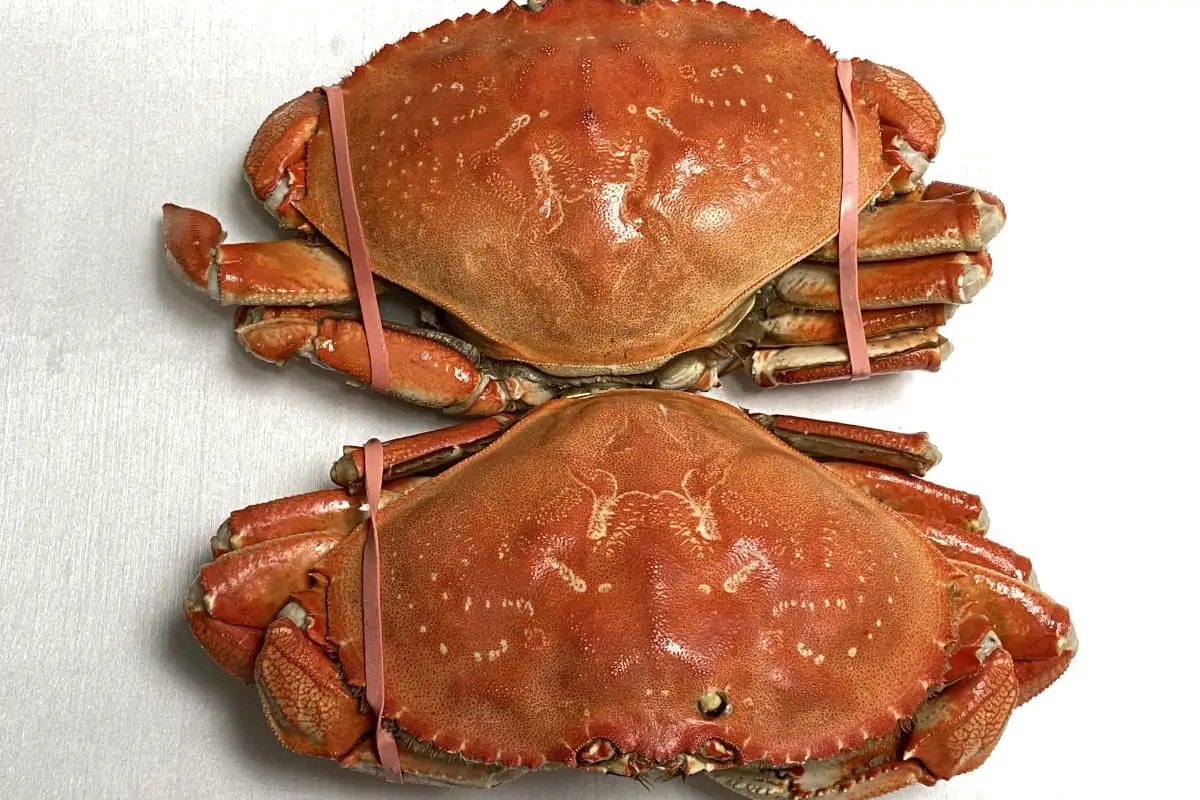
Transfer the crabs from the steamer into an ice bath after steaming so your crabs stop the cooking process.
Grilling
Crabs have to be clean before grilling. Half baking is a preferred method of cleaning. And your crabs have to be slightly cooked before transferring to the grill for full cooking.
You can use a steam or par-boil method, meaning you cook them using one of those methods for at least five minutes. Then let them cool down.
Brush both sides of the crab with a cooking oil such as olive or extra virgin. Next, place them on a medium temperature grill, around 400℉. Cook on each side for about four minutes until the meat has browned.
Baking
Baked crabs also have to be partially cooked before baking. If you prefer to bake them uncooked, you have to be sure they’ve been half-backed and cleaned.
To bake, coat with melted butter and lay the pieces into a large roasting pan. Don’t stack on top of each other.
Cook at 450℉ to 500℉ until they have browned and are sizzling. It usually takes around 10 minutes.
Cooking Frozen Crabs
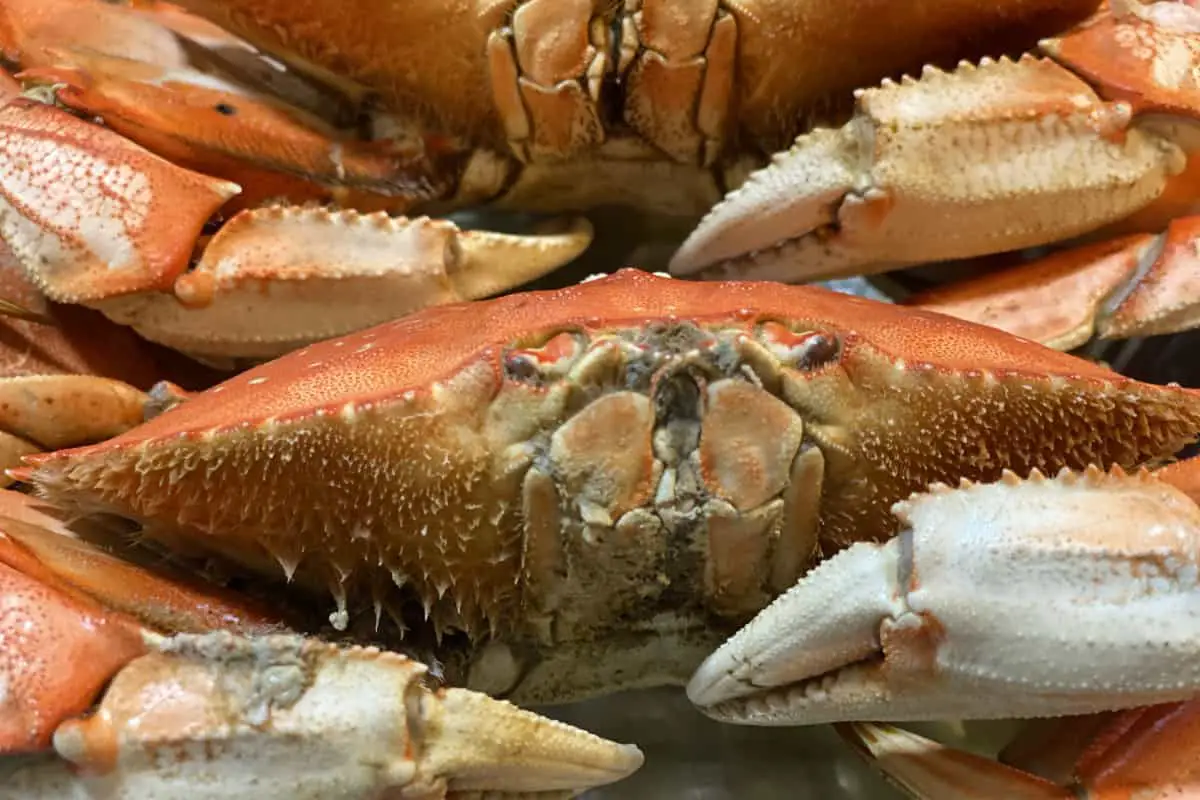
Not everyone has access to fresh crabs. Or maybe you just don’t want to deal with the hassle of live crabs. You could also be someone who doesn’t know how to clean crabs properly. There’s plenty of reasons to choose frozen crab over fresh.
Frozen crabs come partially cooked, so it takes less prep and cooking time. And they’ve already been cleaned, so you don’t have to deal with the mess and time.
To cook frozen crabs, fill a steamer pot with 2” to 3” of water. Once the water is boiling, add the steamer basket and add your crabs. Cover and wait for the water to resume boiling.
Set a timer for 4 to 7 minutes, depending on size. Remove from water and prepare for serving. Unlike with fresh crabs, you don’t have to put frozen crabs into ice water to stop the cooking.
Adjust your cooking time to meet your needs. You may want to start with one crab before cooking a whole batch to ensure you’ve got your timing right. Overcooking frozen crab legs can make them rubbery and dry (Live Strong).
How to Eat Crabs
Many people get confused about what parts of the crabs are safe to eat and how to eat them. You’ll find the majority of meat in the claws and legs, but there are some great chunks found in the body.
Many people decide to eat the viscera and other innards spread on a cracker or crouton. While there is a ton of flavor in the crab butter, as it’s called, it also contains the most concentration of domoic acid (Sea Grant California). Therefore, it is recommended not to eat this part of the crab.
You also cannot eat the hard parts of the crab, even after it’s cooked. While you can serve the crab whole, throw all of it away after you’ve got the meat out.
The downside of eating crab is that it takes a lot of work to get the meat out of the body so you can eat it. You’re sure to work up a considerable appetite. You may even need more than one crab to fill you up.
How to Get the Meat Out
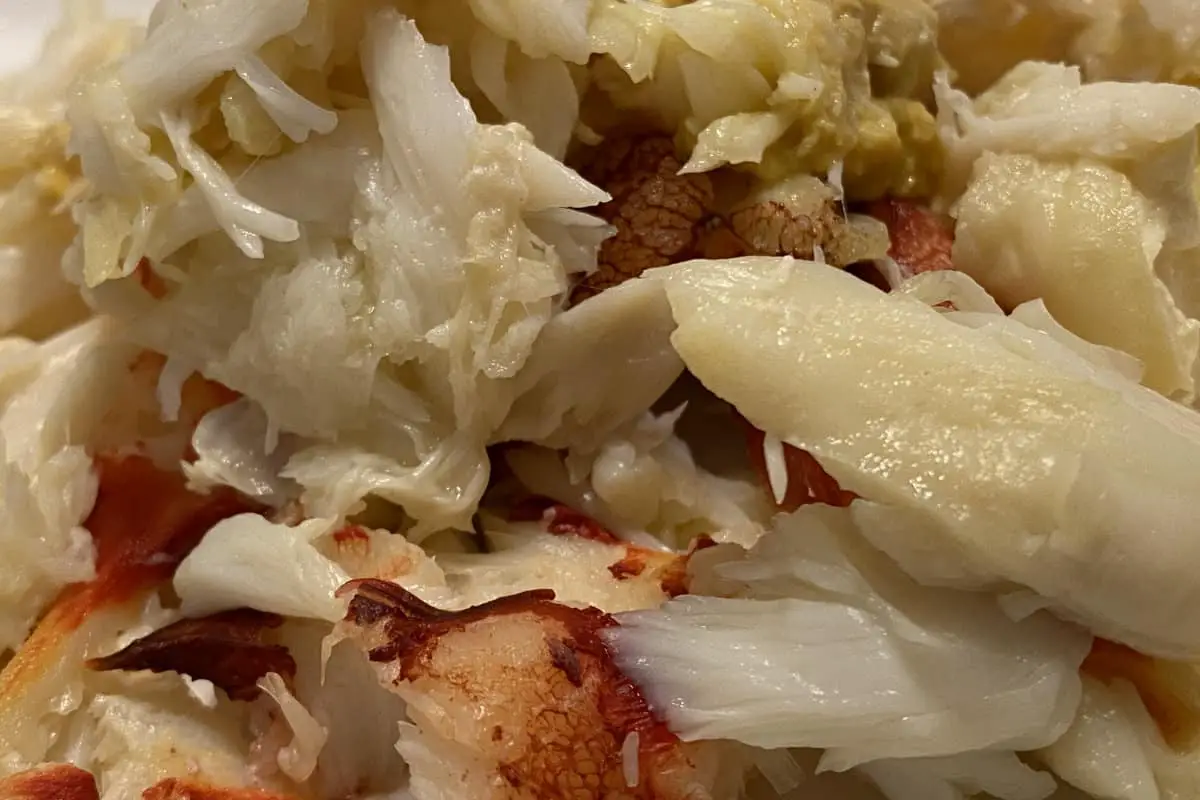
To get the meat out of the crab, you need to start by breaking your crab in half. If you’ve used the half-back method, this step has already been done.
Now detach the legs by twisting and pulling. It usually doesn’t require much effort. Some people can open the thick legs with a twist of the hand to get the meat out. Other people might need a tool like a nutcracker or shears.
If you’ve separated the shell properly, the meat comes out as one solid piece. Mallets and small hammers aren’t as good an option as people think. Beating the shell open can cause fragments of shells to embed into the meat. It can also bruise the meat, making it lose its flavor and texture.
Most people need to use a lobster cracker or scissors to crack the harder shell for the claws. This meat is the sweetest part of the crab. Many people use a fork to pull the meat out of the claw.
The meat in the body isn’t as sweet, but it’s still yummy enough to take the time to retrieve it. The more meat you eat, the fewer crabs you’ll need to cook. You can use a fork, toothpick, skewer, or even the crab pincer to retrieve the meat from the body (Foodal).
Dungeness Crab Is Safe and Good to Eat
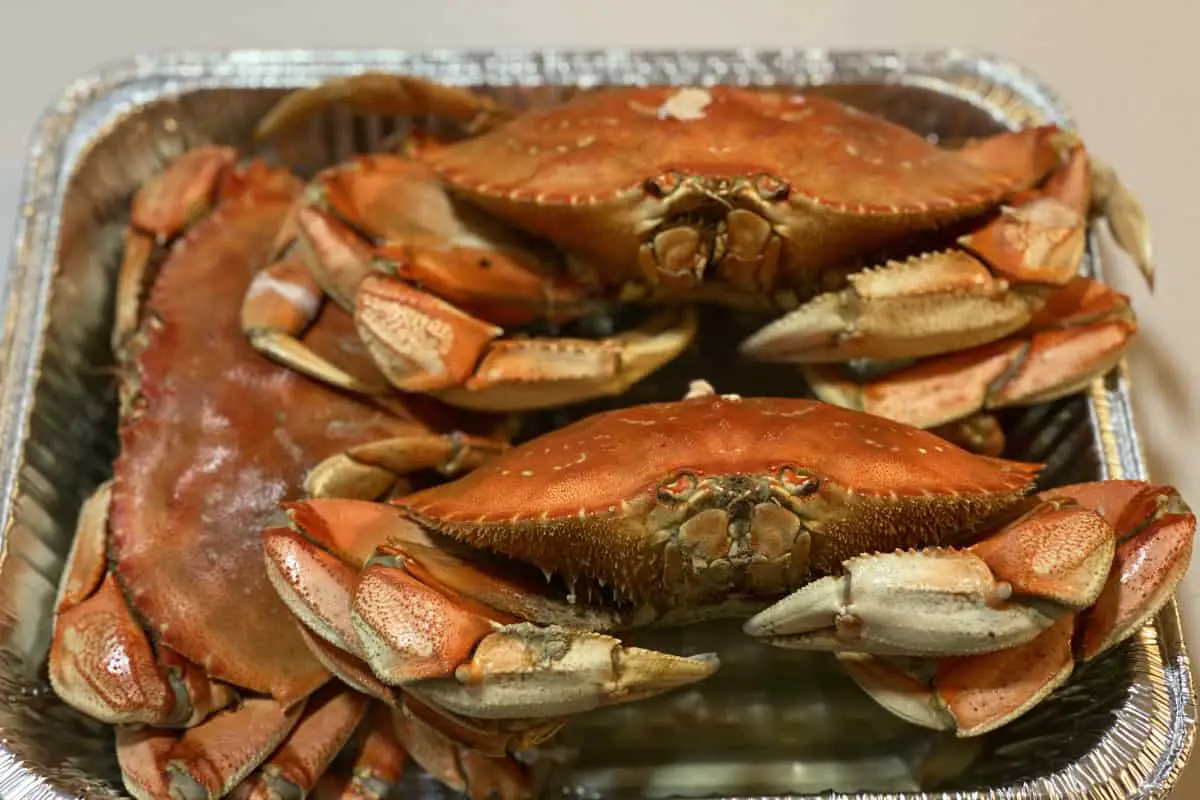
Dungeness crab can be a safe and delicious crustacean to eat. Although some crabs contain traces of Domoic acid, which can be poisonous and even fatal in large doses, crab is a very safe crustacean to eat, as long as appropriately handled.
It’s even recommended during pregnancy as a healthy source of protein. You can cook crab live, freshly dead, or even frozen. Experiment with different recipes to find which cooking method you like best. If you want to learn how to crab snaring, check my beginner’s guide on how to catch Dungeness crab from the surf.![]()

